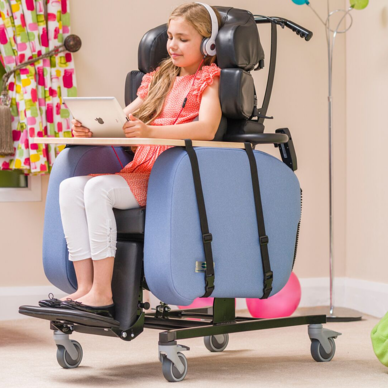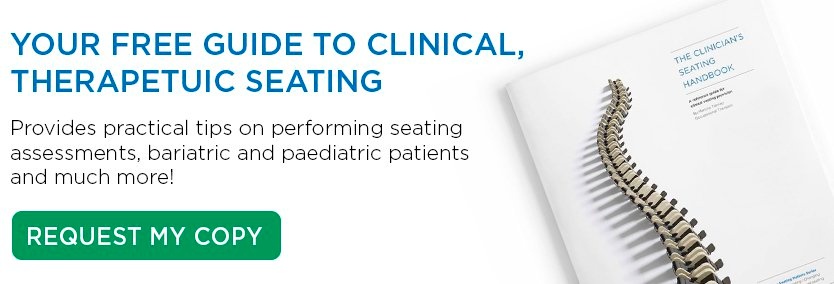SEE THE KIDZ SEATING RANGE HERE
Seating for Growing Children
In my opinion, the most important feature in a paediatric chair is that it should have adjustability. It is so important that the chair can grow with the child to provide the best possible support and continuity of care. This will help eliminate wait times on new equipment orders and also reduce the cost to the family as the child grows or their abilities change.
 Children can be categorised as two types of sitters:
Children can be categorised as two types of sitters:
- Active sitters – able to adjust the position of the trunk and pelvis on their own.
- Passive sitters – only seated through the use of a mobility device. They are usually unable to maintain trunk and pelvis position actively.
Knowing the type of sitter the child currently is and how they are likely to sit in the future will help determine what type of chair and adaptations are best suited for the child in order to provide continuous care with little to no changes to the equipment that you currently have.
Seating Matters have helped families with children suffering from a variety of conditions that have helped to improve posture, reduce injury and improve the quality of life for the child and their family. You can read more on our children’s case studies here.
In the meantime please feel free to take advantage of my clinical seating reference guide, The Clinician’s Seating Handbook. You can submit your mailing address here to receive it in the post.
REQUEST YOUR COPY OF THE CLINICIAN’S SEATING HANDBOOK
*Note – the purpose of this blog is to give an overview of the product with some tips to consider on its use. This is not intended to be a substitute for professional or medical advice, diagnosis, prescription or treatment and does not constitute medical or other professional advice. For advice with your personal health or that of someone in your care, consult your doctor or appropriate medical professional.** This post was originally published on http://blog.seatingmatters.com/paediatric-seating-chairs-for-children-with-disabilities

